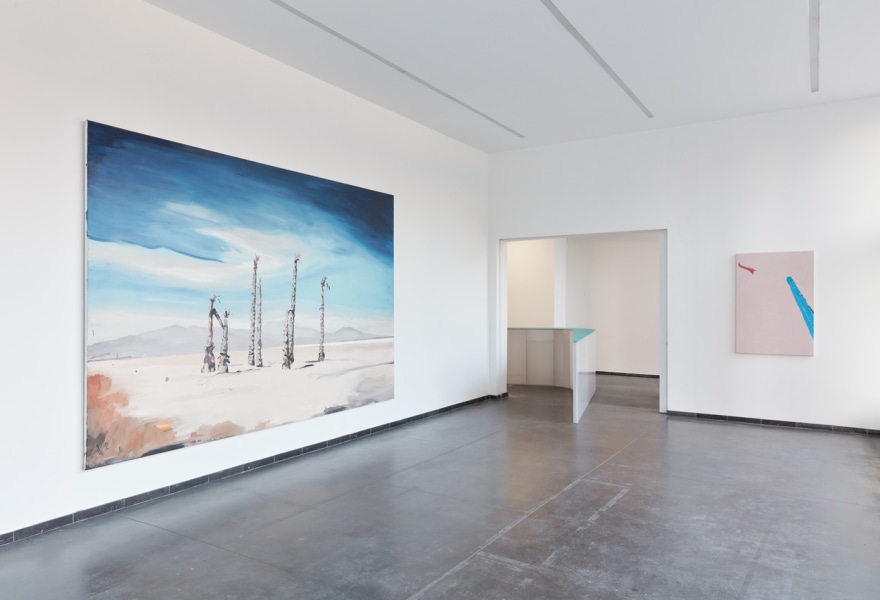11 july 2022, Manuela Klerkx
Aardenburg Arts Festival 2022 | ‘Beyond Borders', with art by Maria Roosen, Navid Nuur, Nadia Naveau, Koen van den Broek, Folkert de Jong and many others | An interview with curator Benedict Vandaele
For the Kunstenfestival Aardenburg, Bruges art historian and curator Benedikt Vandaele selected 30 artists to explore the concept of 'border'. What better place than on the border between the Netherlands and Belgium to hold this festival, entitled Over Grenzen (Beyond Borders)? The festival capitalises on the geographical location of the charming Zeeuws-Vlaanderen town of Aardenburg, a few kilometres from the southernmost border, and builds an artistic bridge with the Belgian border town of Middelburg. The artworks are displayed at around 15 indoor and outdoor locations, including churches, abandoned homes and private gardens, and reflect geographical, social and art historical dimensions of the concept of ‘border’. This third edition of Kunstenfestival Aardenburg 2022 runs from 16 July to 4 September and consists of the exhibition Beyond Borders and a multidisciplinary programme of activities with, among others, authors Arnon Grunberg and Jeroen Olyslagers.

Portret curator Benedict Vandaele © John Stoel
Seven questions for curator Benedict Vandaele
MK The exhibition you are curating for Kunstenfestival Aardenburg (KFA22) and your essay are both titled Beyond Borders. The word 'border' evokes numerous associations, both among the artists and visitors. What kind of 'borders' are we talking about here?
BV The concept of border is multi-interpretable and therefore difficult to grasp in its entirety. I consider the multiplicity of interpretations a prerequisite for addressing different themes through the work of contemporary artists. At the same time, the term makes it possible for visitors to add various (personal) layers of meaning as they make their way along the art route.
It is by no means my ambition as curator to show every possible association that the word 'border' evokes in terms of contemporary visual art. That would be impossible. But the following three themes were decisive in selecting the artworks: location, social aspect and artistic aspect.
The exhibition Beyond Borders takes place at 16 different locations in Aardenburg and builds a bridge to the Belgian border village Middelburg (four locations). That makes this biennial unique, because as far as I know, there is no other art festival that extends over two or more countries. Socially, we live in an extremely dynamic world and therefore, as human beings, we need borders in interacting with each other and our environment. At the same time, we know that it is impossible to define these boundaries permanently. There are always factors that cross, blur or shift across existing boundaries. Migration is a common theme in the works of art. But subjects such as ecology and spirituality are also directly or indirectly addressed. KFA22 shows artists from different generations and not all of them are only active within Europe. This ensures that the exhibited artworks are highly diverse, both in content and form. As curator, I have also devoted considerable attention to selecting artworks in a wide range of media.

Gommaar Gilliams, courtesy Gallery Sofie van de Velde
MK How did you select the artists?
BVFirst of all, I should mention that Beyond Borders was actually supposed to take place last summer. The coronavirus pandemic created a lot of uncertainties that forced the original curators, Sofie Van de Velde and Jason Poirier dit Caulier, to stop their preparations. Due to other professional obligations, it was no longer possible for them to continue the project. That is why they asked me, giving me the freedom to work out the concept as I saw fit.
The artists at the Kunstenfestival Aardenburg 2022 have different backgrounds and are in different stages of their artistic careers. The more established ones are mainly from Belgium and the Netherlands and are active in the international art circuit. Recent alumni of the Jan van Eyck Academy (Maastricht) and the Higher Institute of Fine Arts (Ghent) have also been invited. Finally, artists nominated by CBK Zeeland are also participating.
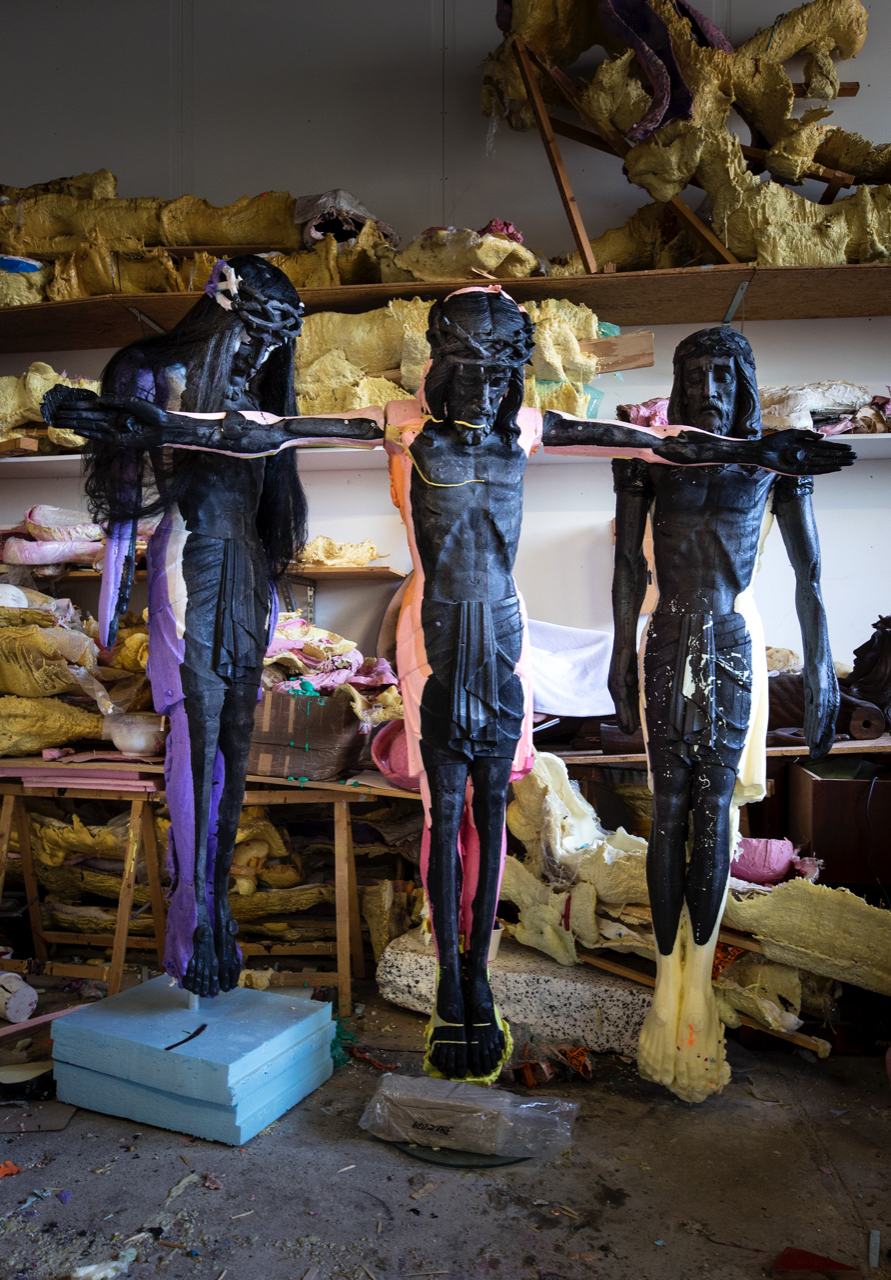
Folkert de Jong, courtesy: Galerie Fons Welters en Gallery Sofie Van de Velde
MK A fairly large number of the participating artists do not necessarily make socially engaged work, at least not at first glance. I'm thinking here about Navid Nuur, Maria Roosen and Nadia Naveau. Yet you asked them to participate in the event. Did you want to challenge them with this unusual theme or did you have other motives?
BV That's right, it was not my intention to show only artists who are socially engaged. The focus is on all possible interpretations of the word ‘border’ and how the artists recognise and define this concept in their work and lives. For some artists, it was also an opportunity to create new work. Navid Nuur, for example, focused on the meaning of the concept of 'border', which resulted in the project 'A one line poem' in which the concept of 'border' is approached from different angles. The artwork itself consists of a postcard with a philosophical sentence, comparable to one line poetry. During the festival, this card will be exhibited in a beautiful garden, but without giving the audience the possibility to perceive the sentence. Only when people request the postcard on our website will it be sent to them and they will be able to fully experience the artwork. In order to accommodate all requests, we have printed 2,500 postcards that will be sent for free.
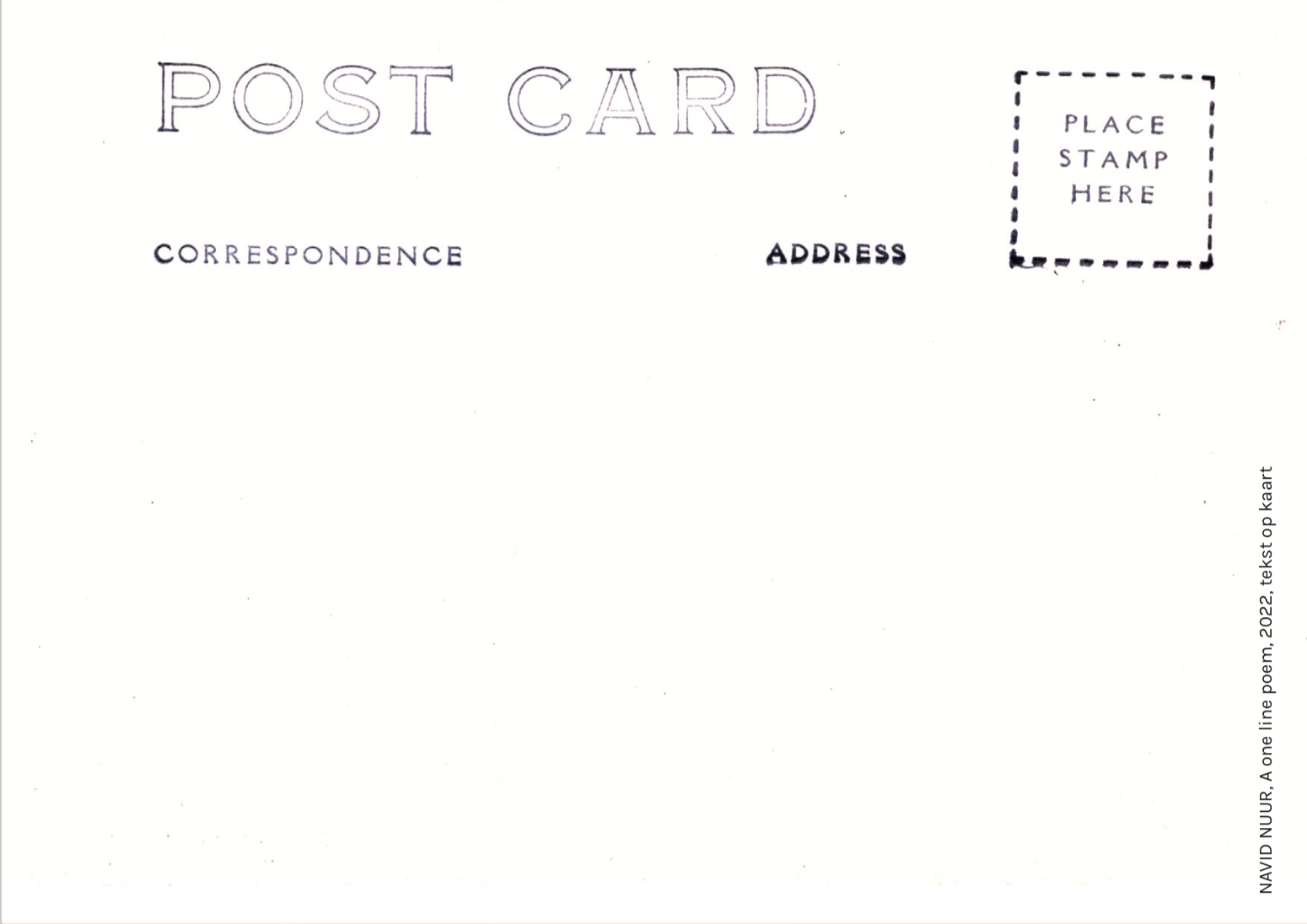
Courtesy: Navid Nuur
This hidden sentence, by the way, transcends culture, background, age and body. It provides depth within our own boundaries, thus broadening our horizons. Nuur's concept also toys with the idea that people may or may not come to KFA22. If you leave your address on the website, you will receive the artwork by mail. So, this one line poem is a kind of physical reminder of the visit or initial contact with the work. At the same time, the card keeps part of the biennial outside the boundaries of our festival grounds. Apart from the many memories and photographs, A one line poem will be the only artwork separate from the exhibition itself.
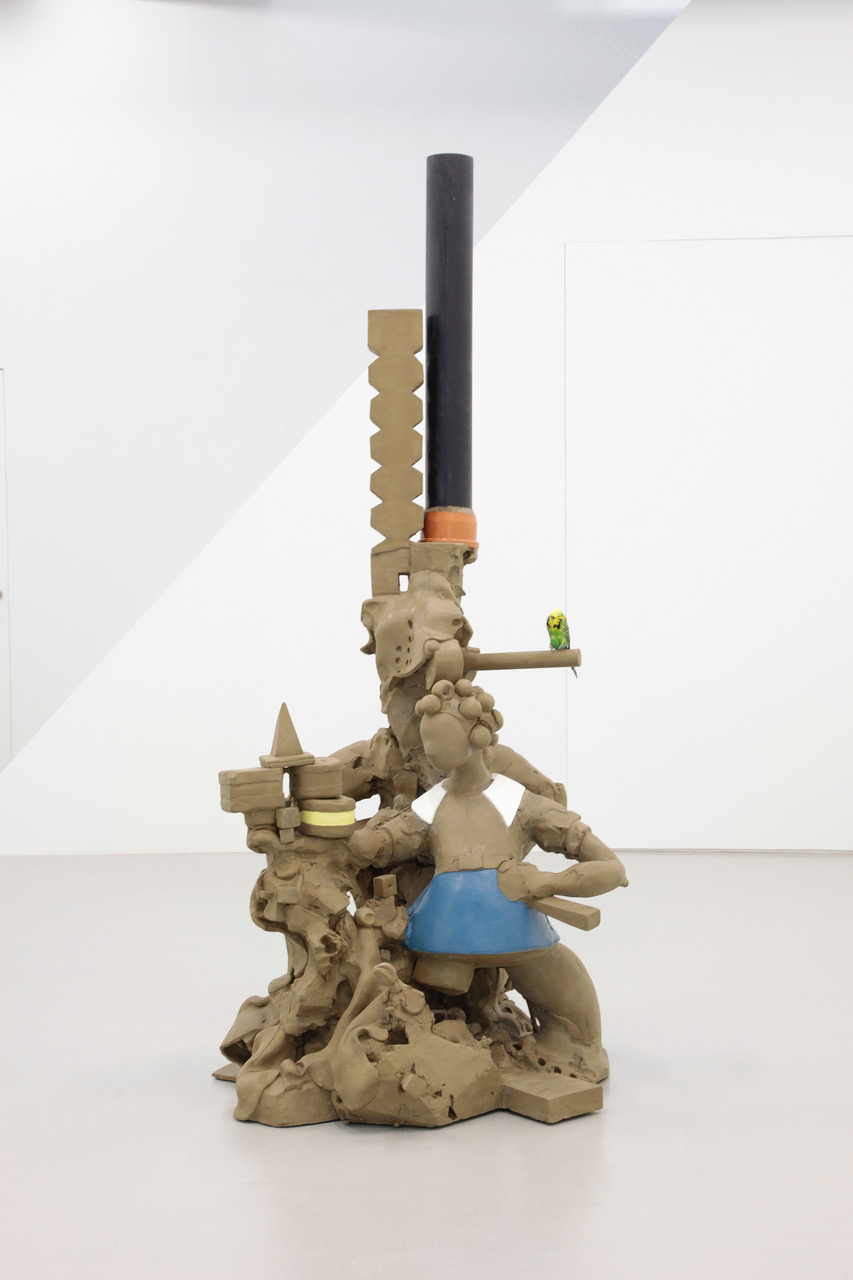
Nadia Naveau, courtesy: Base-Alpha Gallery
Antwerp-based artist Nadia Naveau often crosses the Belgium-French border to visit her second studio in Saint-Bonnet-Tronçais. During her visit to Aardenburg, she became interested in a landscaping company that strongly reminded her of a studio. As a result, she chose to exhibit a work of art that, produced in France, explicitly refers to her studio in France. The work also shows a stuffed bird, a playful reference to the swallows that live in this barn. The sculpture ‘Les Bois de Construction Saint-Bonnet-Tronçais’ was created in Naveau's studio in Saint-Bonnet-Tronçais. For her work, she often collects wood from Forêt de Tronçais, the largest oak forest in Europe. In an abandoned factory – where the first metallisation of the Eifel Tower took place – Naveau regularly searches for interesting objects. Together with other found objects, they become part of her sculptural compositions. During the creation process of ‘Les Bois de Construction Saint-Bonnet-Tronçais’, elements like construction materials and traditional French toys became part of a clay sculpture in which cartoon characters seem to appear. After making a mould, Naveau mixed the colours of different epoxy casting resins to render materials – such as the clay and construction pipe – as realistically as possible. The stuffed parakeet enhances this illusion and emphasises the playful nature of the sculpture. By subtly using traditional and contemporary materials and techniques, Naveau questions our powers of perception.
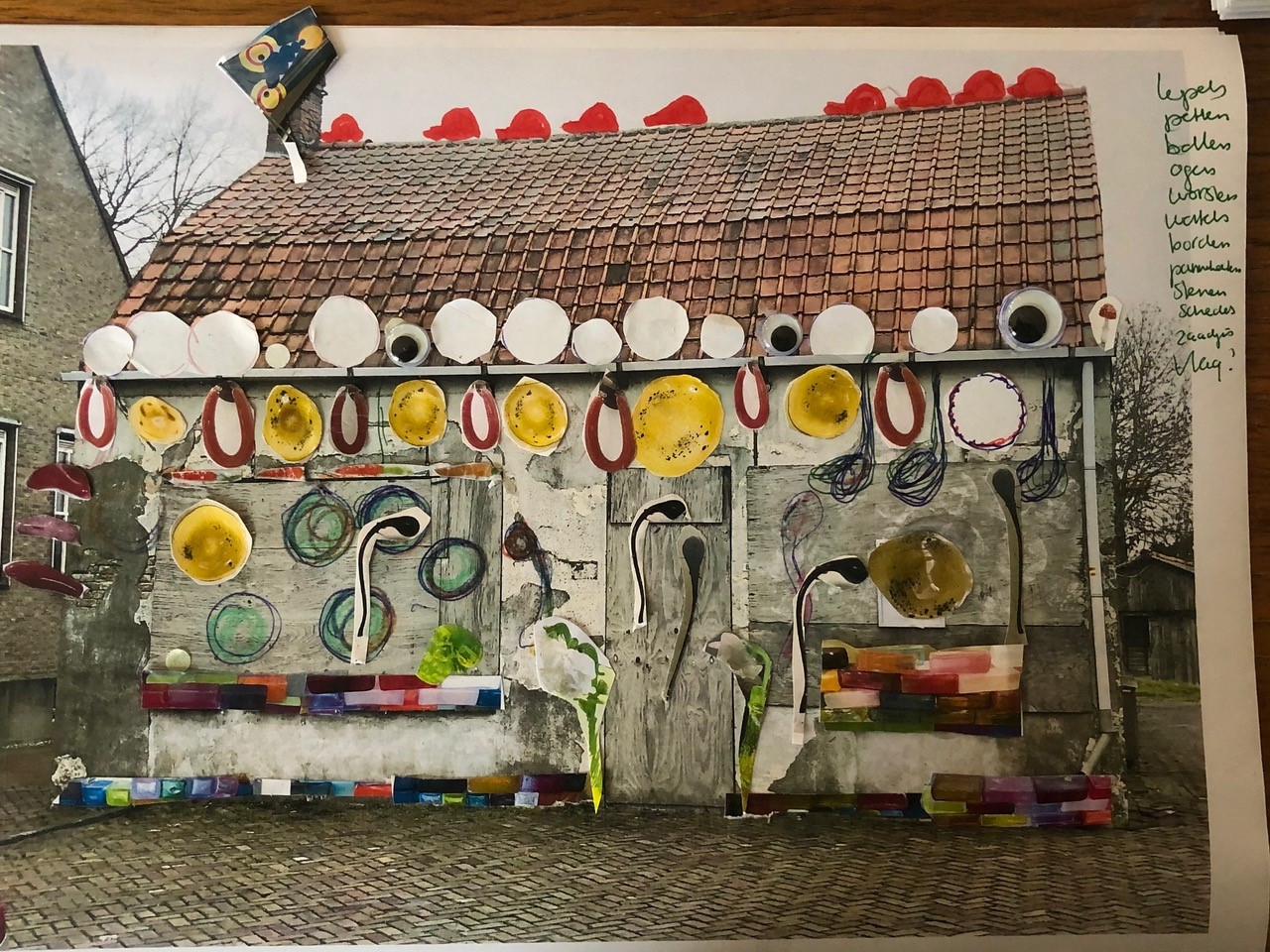
Maria Roosen, courtesy: Galerie Fons Welters
During her first visit to Aardenburg, Maria Roosen was captivated by the state of disrepair of a house on the market square. It reminded her of images of war and other humanitarian disasters: houses from which windows, doors and walls have disappeared and the remaining parts are exposed to all kinds of weather. This situation inspired her to bring the drab house to life with colourful glass objects that refer to different elements of the interior: beer, plates, sausages, ladles, caps, etc. As a material, glass is strong and can last hundreds of years if used properly, but one wrong move and it is ends up in shards, just like life and love.

Johan Tahon, Ewer, 2022, courtesy: NQ Gallery
MK In your essay ‘Beyond Borders’, you write, “A better understanding of the social context undoubtedly leads to a better understanding of the artistic practice of contemporary visual artists”. In this context, you talk about 'metamodernism' and 'sensibility', two terms that need some explanation and that you could perhaps illustrate with a number of works of art?
BV Cultural philosophers Timotheus Vermeulen and Robin van den Akker first used the term 'metamodernism' in 2009. Metamodernism follows postmodernism and can best be understood as a period in which a certain atmosphere is experienced. It is not an art movement but a sentiment shared by many people in Western culture. Both philosophers consider the financial crisis of 2008 the decisive moment for change. Since that moment, more and more people have been living in discontent with the economic system, wanting to recast capitalism and formulate sustainable answers to social and ecological problems.
Unlike with postmodernism, people no longer adopt a relativistic attitude towards difficulties, but actively aim to create a better world. Emerging from the postmodern understanding, metamodernists do not follow a predetermined path that leads to a predetermined goal. Their focus is not on achieving goals. instead, it is on actively making attempts in the hope that steps will be taken in the right direction.
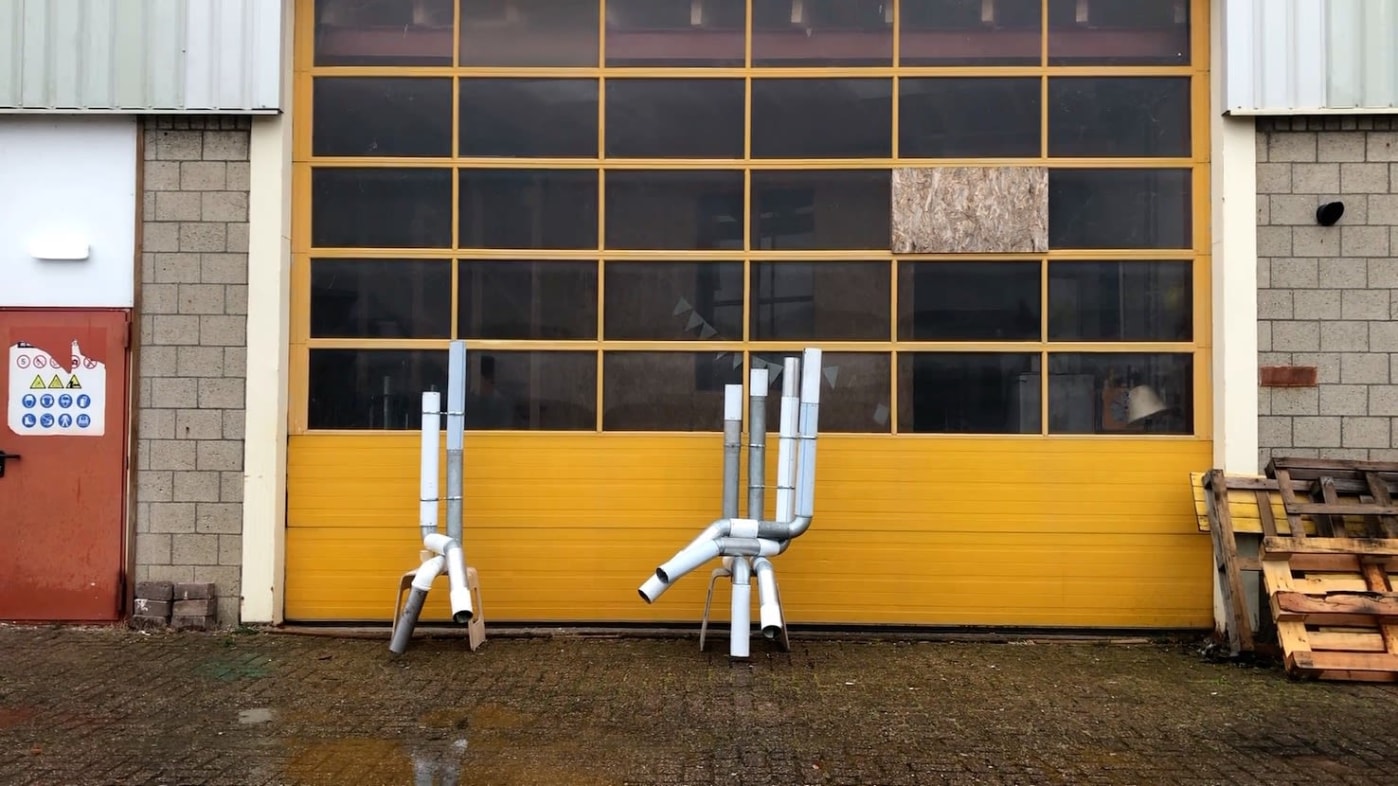
Ricardo van Eyk, Leg Day I & II, 2021, courtesy: tegenboschvanvreden
MK In addition to educational workshops and tours, Beyond Borders offers other activities in the areas of music, poetry and literature. What do you consider the importance or added value of a multidisciplinary approach?
BV The city of Aardenburg is known for its extensive art and culture scene. It would therefore be a missed opportunity to show only contemporary visual arts. A visitor might come for a specific activity and then also be amazed by other art forms. In addition, the entire programme really brings Aardenburg and Middelburg to life during the summer holiday. It offers the ideal opportunity for residents to interact in a relaxed atmosphere and for newcomers to get to know their fellow residents. The extensive programme can also be a motivation to receive guests who do not live in the region. A cultural outing can be combined with a walk or bike ride in the beautiful surroundings of Aardenburg and Middelburg.
MK What would you like to impart on visitors?
BV It is not so much my intention to impart anything on visitors. With Beyond Borders I want visitors, as they follow the art route, to reflect on the theme of 'borders' and to question how they experience them in their own lives. Various themes can trigger them to reflect on personal points of view. Seeing a work of art might lead to new insights that make someone revise or nuance their personal views. The encounter with a particular work may also confirm a personal view and reinforce a personal opinion.
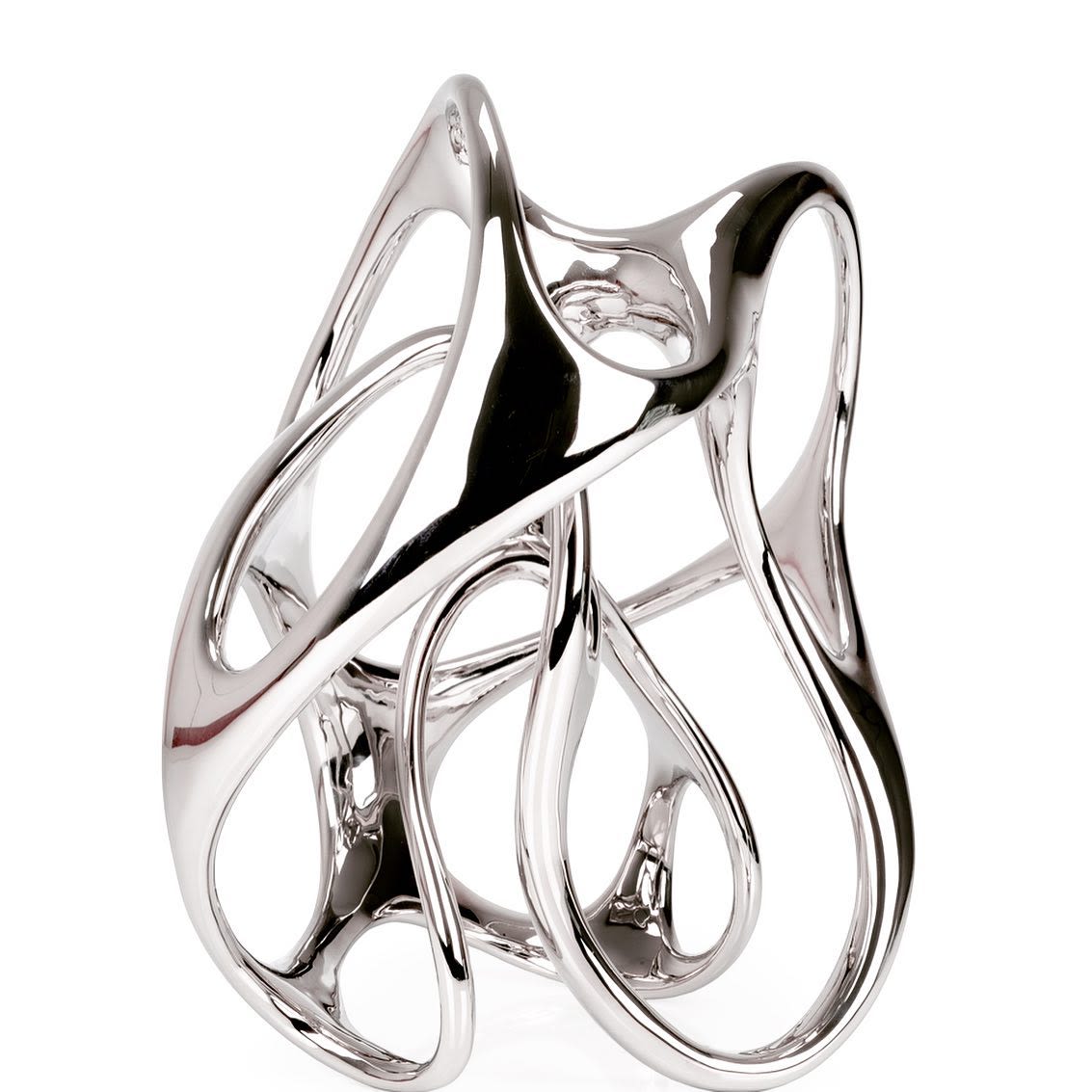
Nick Ervinck, LIABLOY, 2022, courtesy: MPV Gallery
MK Speaking of borders, how can we reduce those between the Dutch and Belgian art worlds? Both countries share as much as they differ from each other.
BV Is it desirable or necessary to reduce the current boundaries between the Belgian and Dutch art worlds? I see many fascinating collaborations between the two countries through such initiatives as deBuren or De Brakke Grond. In many galleries and art markets, I see fascinating partnerships between Dutch and Belgian artists and art professionals. So, where there is common ground or shared interest, I feel there is successful collaboration. Blurring the borders too much would not be a good thing in my opinion. It would lead to a form of conformism in which the individual’s own identity and culture may be jeopardised. In my opinion, similarities and differences are often viewed as opposites; I prefer to view them as complementary qualities towards achieving a special form of synergy.

Tamara Dees, Maillard (the pirate), 2019, courtesy: Galerie van den Berge
The Kunstenfestival Aardenburg exhibition is accompanied by a catalogue, educational workshops, guided tours and an extensive programme with poetry, music and literature – including a conversation between Arnon Grunberg and Koen van den Broek on the 19th of July and between Jeroen Olyslagers and Johan Tahon on the 13th of August. Tickets can be ordered here..
The following artists are participating: Philip Aguirre y Otegui, Johnny Beerens, Semâ Bekirović & Jan-Pieter Karper, Dries Boutsen, Kent Chan, Nelleke Cloosterman, Anton Cotteleer, Tamara Dees, Folkert De Jong, Elise Eeraerts, Nick Ervinck, Maen Florin, Gommaar Gilliams, Che-Yu Hsu, Nicholas William Johnson, Manjot Kaur, Maartje Korstanje, Frank Leenhouts, Domenico Mangano & Marieke Van Rooy, Dave Meijer, Nadia Naveau, Xavier Noiret-Thomé, Navid Nuur, Maria Roosen, Jorieke Rottier, Schellekens & Peleman en Margriet van Breevoort, Schscht, Boram Soh, Johan Tahon, Sven ’t Jolle, Ingrid van de Linde, Koen van den Broek, Ricardo van Eyk
